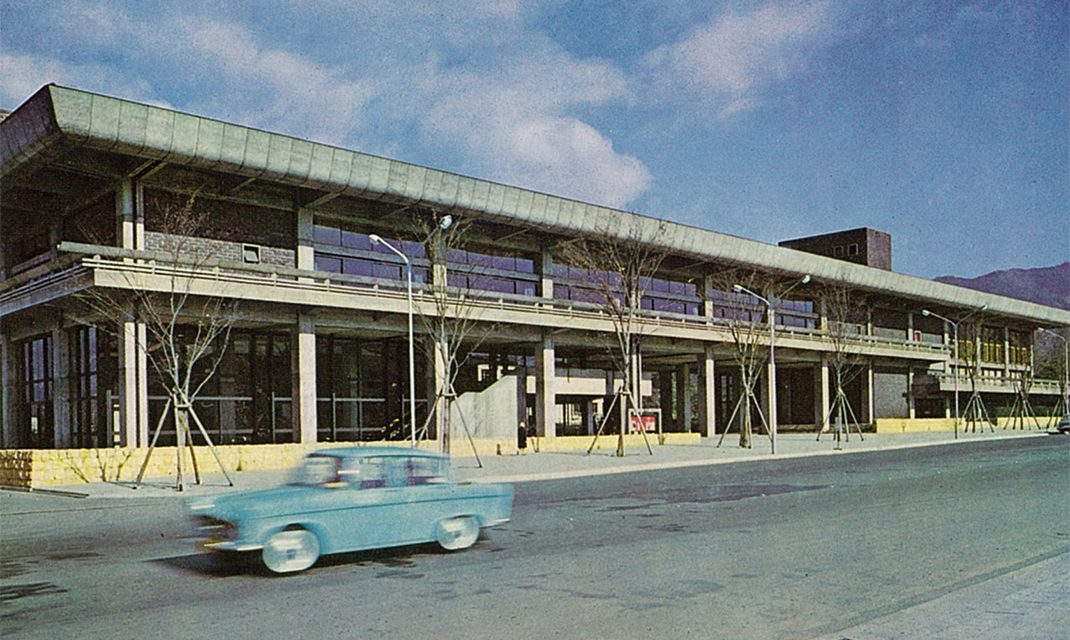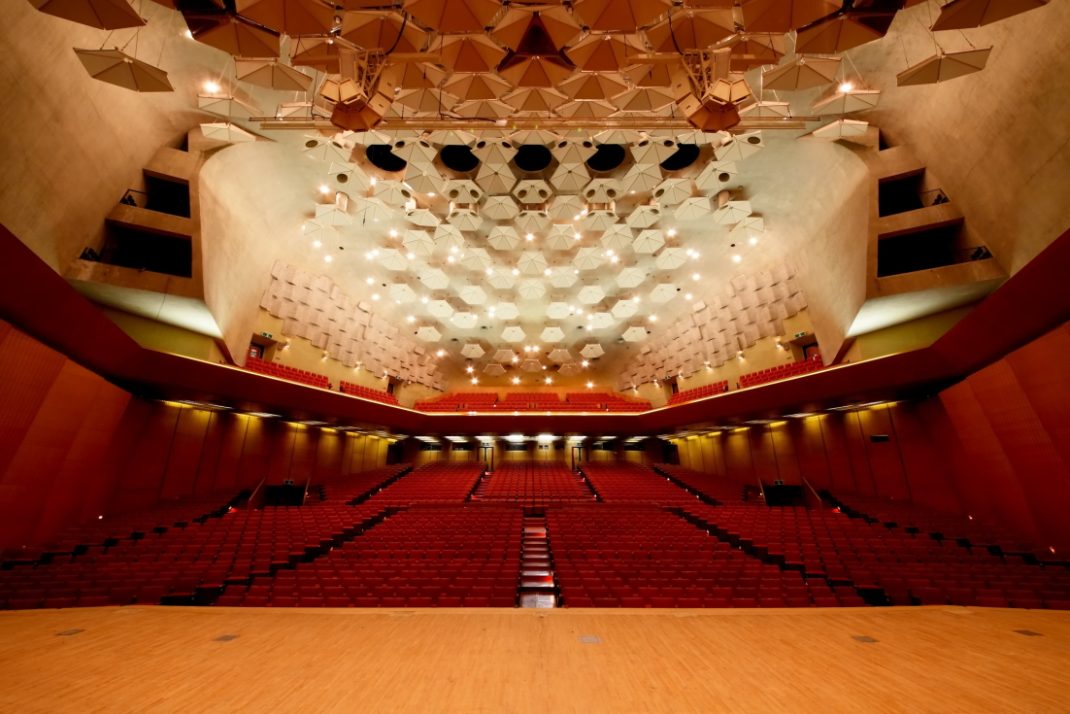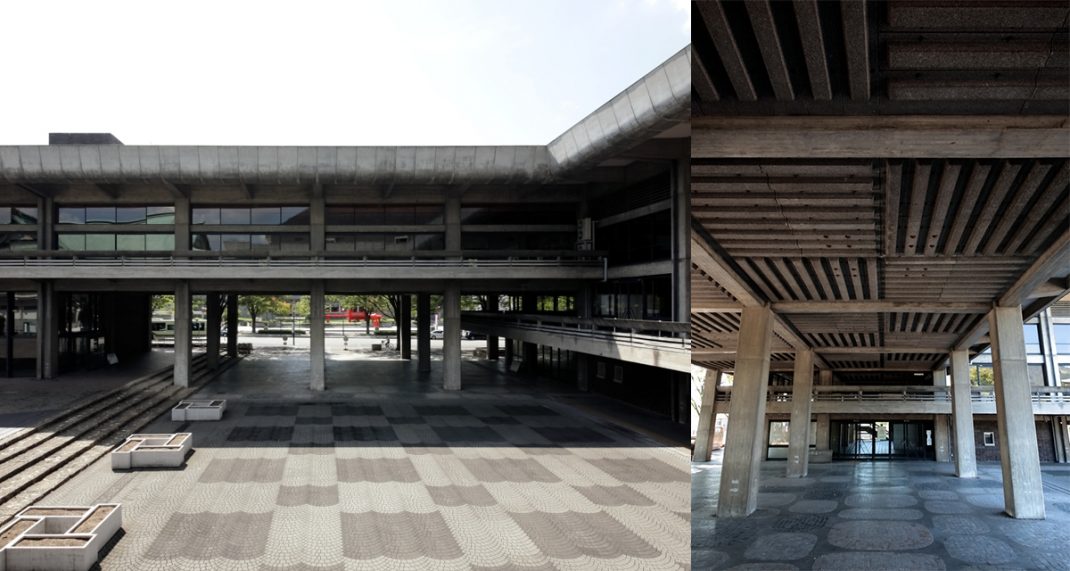ROHM Theatre Kyoto opened in 2016 inside the renovated former Kyoto Kaikan, which was one of the first such public halls in Japan when it originally opened in 1960. The goal of ROHM Theatre Kyoto is to create theatre culture. In addition to creating and staging its own performing arts productions, it invites world-class productions to perform, all aiming to build up a vibrant and rich model of lifestyle with the public that combines the arts with everyday life. ROHM Theatre Kyoto also initiates sustained partnerships with other venues and organizations, striving to contribute to promoting and improving the local region.
Its achievements have received widespread acclaim, with the theatre winning the 2023 Regional Promotion Prize. ROHM Theatre Kyoto is run by Kyoto City Music Art Cultural Promoting Foundation, as designated by Kyoto City.
Along with the Main Hall, the only such venue in Kyoto Prefecture capable of seating around 2,000, and the roughly 700-seat South Hall and the 300-square-meter black box theatre space that is the North Hall, ROHM Theatre Kyoto’s facilities include ROHM Square, which can host outdoor events, and a bookshop, café, and restaurant in the Park Plaza building, allowing ROHM Theatre Kyoto to function also as a place for members of the public to relax.
The renovation of ROHM Theatre Kyoto sought to carry on the legacy of Kunio Maekawa’s original Modernist architecture, while transforming into a multipurpose hall capable of hosting opera, ballet, contemporary theatre, traditional performance, and more, as well as events like award ceremonies, lectures, and international conferences.
The design of the renovation was overseen by Kohyama Atelier and was awarded the 17th Public Buildings Prize (Cultural Facility Division) in 2021. The ROHM Theatre Kyoto name is the result of an agreement between Kyoto City and ROHM Semiconductor to purchase the naming rights.

Kyoto Kaikan opened in the Okazaki area of Kyoto on April 29th, 1960, as the first such multipurpose cultural hall in Japan. It was designed by the late Kunio Maekawa, one of the representative architects of modernism in Japan. The architecture placed an emphasis on harmony with the local Okazaki surroundings, winning the 1960 Architectural Institute of Japan Prize and much acclaim.
As the only 2,000-seat hall in Kyoto Prefecture, Kyoto Kaikan has hosted a wide range of events since opening, including concerts, lectures, film screenings, and more. It became a central part of Kyoto cultural life. However, after five decades, issues with the aging and functionality of the facility meant it was unable to respond to the needs of current users and audiences. Planning commenced for the redevelopment of Kyoto Kaikan.

Image courtesy of Nagaishi Studio
As part of the redevelopment process, a committee was set up in order to consider the architectural value of Kyoto Kaikan, highly praised as an example of modernism in Japan, and how to reflect this in the foundational redevelopment plans, as well as how redevelopment could contribute to the improvement of the present Okazaki landscape and scenic beauty. The core design was handled by Hisao Koyama, one of the leading architects in Japan today. Koyama says: “High-quality conservation and restoration is not simply about repairing those parts that have aged, but must also superimpose values suitable for each new era on top of the old values.”
The redevelopment project was greatly supported by ROHM Co., Ltd. (ROHM Semiconductor), which has its headquarters in Kyoto, through the purchasing of the naming rights. As such Kyoto Kaikan, after 50 years of history as the city’s much-loved “hall of culture”, has been renamed after the new sponsor, reopening as ROHM Theatre Kyoto on January 10th, 2016.

(Left) Image courtesy of Nagaishi Studio
(Right) Ceiling of Kyoto Kaikan. Image courtesy of Nagaishi Studio
In its efforts to restore and redevelop Kyoto Kaikan, Kyoto City has been generously supported by ROHM Co., Ltd. (ROHM Semiconductor), a manufacturer that has long demonstrated an understanding in the value of promoting culture and the arts, as well as engaged in sponsoring a wide range of music activities all over Japan. In an unprecedented gesture, ROHM Semiconductor agreed to sponsor the redevelopment of Kyoto Kaikan in exchange for the naming rights for 50 years.
In accordance with the contract for the naming rights for Kyoto Kaikan, the facility was renamed ROHM Theatre Kyoto with the goal of being a hall of culture transmitting from the international city of Kyoto; of being a place where a wide range of stage arts, from music to theater and the traditional performing arts, are showcased. In such a vision we can see the spirit of ROHM Co., Ltd.
ROHM Semiconductor - ROHM Semiconductor ROHM Semiconductor is a manufacturer headquartered in Kyoto and with a long history of supporting music and the arts. Sharing an understanding of the new concept behind the redevelopment of the much-loved, 50-year-old Kyoto Kaikan, ROHM Semiconductor generously agreed to sponsor the project through acquiring the venue naming rights for the next 50 years. ROHM Theatre Kyoto opens in Kyoto as a hub for world-class arts and culture, one that will be cherished by many as a hall of culture that can represent Japan